Jens Faurschou’s first taste for art was in the 1980s when, while at university, he landed a job with a company that rented out works of art from companies around Copenhagen to display in their offices. Faurschou was responsible for maintaining the database which, before the widespread use of computers, functioned much like a catalog of library cards. In fact, the business was called the Art Library.
His appetite whetted, Faurschou established his first gallery, Galleri Faurschou, in Copenhagen. In the beginning, he mainly traded with Belgian artists Pierre Alechinsky, then he marked his big breakthrough by obtaining a Warhol (representing Queen Margrethe II of Denmark), then a few Picassos and a couple of Miró. It has also become one of the main suppliers of works of Edvard Munch. Throughout this time he reinvested in the gallery to promote young Danish artists.
It wasn’t long before Faurschou cemented his place as Denmark’s preeminent gallerist, specializing in top-notch modern and contemporary art. In 2007, he opened a second gallery in Beijing’s arts district, 798; the inaugural exhibition presented the works of Robert Rauschenbergwho was the first Western artist to exhibit at the National Art Museum of China in 1985. Between them, the two galleries exhibited international artists Gerard Richter, Gabriel OrozcoDanh Vo, Ai Weiwei and Cai Guo-Qiang, as well as Danish artists Michael Kvium and Christian Lemmerz.
In 2011, Jens Faurschou made a turning point by creating the philanthropic association Fauschou Foundation and the conversion of galleries in Copenhagen and Beijing into non-commercial exhibition spaces. The aim was to focus on collecting and producing exhibitions while promoting greater cross-cultural dialogue between East and West. In 2015 he also co-founded Copenhagen Contemporary, a museum space for the exhibition of large-scale installations.
new York becomes the third town to have a Faurschou museum. In 2019, he and his wife Masha opened a cavernous ground-floor space in a former shoe factory in Greenpoint, Brooklyn. In 2020, the foundation sold 30 works in a single-owner auction at Christie’s to continue to offer exhibitions and programs free of charge and accessible to the public in Copenhagen, Beijing and now in New York.
We caught up with Jens Faurschou about his collecting philosophy at the opening of his latest exhibition in New York, “Embrace the world within(until September 17), with works by Louise BourgeoisYoko Ono and Miles Greenberg.
What was your first purchase?
Danish artist Balder Olrik paint Untitled from 1985, which we still have. It was around $500 at the time, and a work I would never want to sell. It immediately spoke to me.
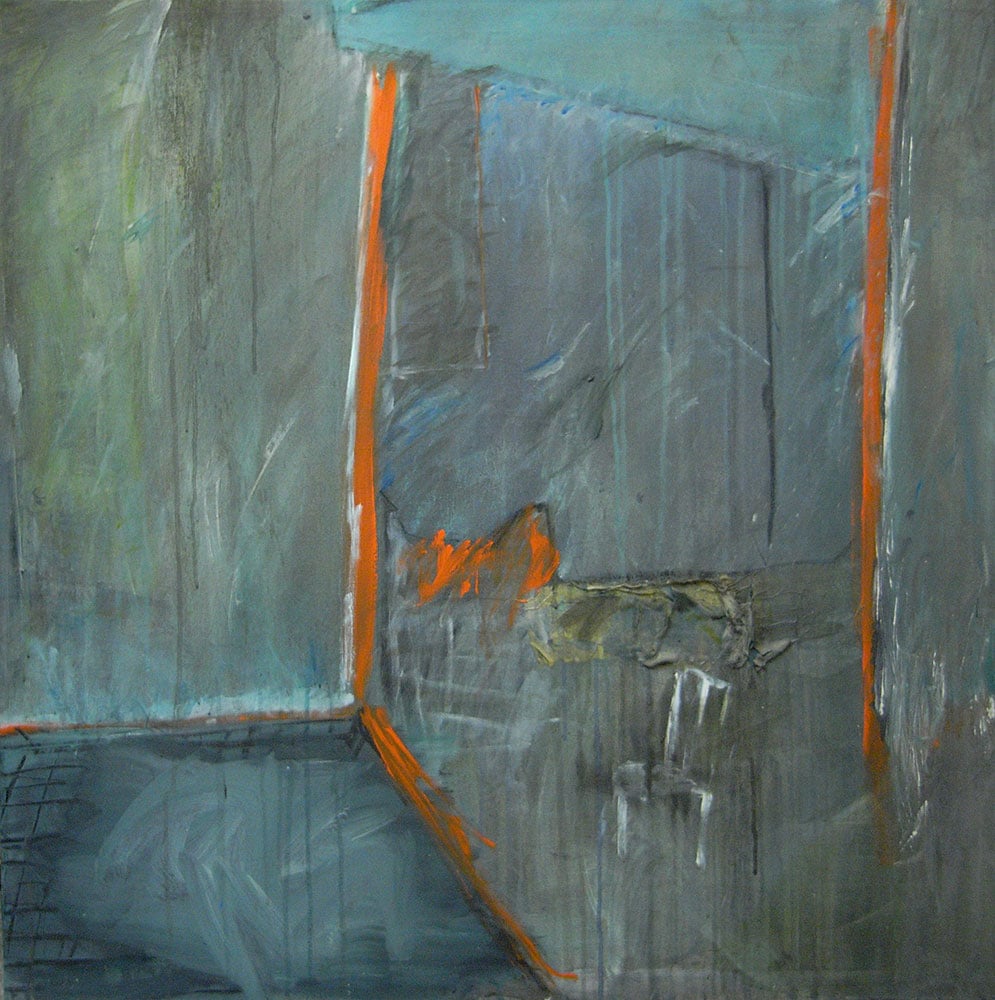
Balder Olrik, Untitled (1985). Courtesy of Jens Faurschou.
What was your last purchase?
We recently acquired works by two artists who caught my attention for different reasons. The late Ohio painter Curtis Barnes Sr., whom we first featured in New York last fall. It was a privileged moment to be able to introduce new audiences to this largely unknown work.
Another recent purchase is Miles Greenbergperformance piece of The embrace. It was featured in our exhibition at Faurschou New York. It’s the first performance piece we’ve ever purchased, and an incredibly powerful piece of work.
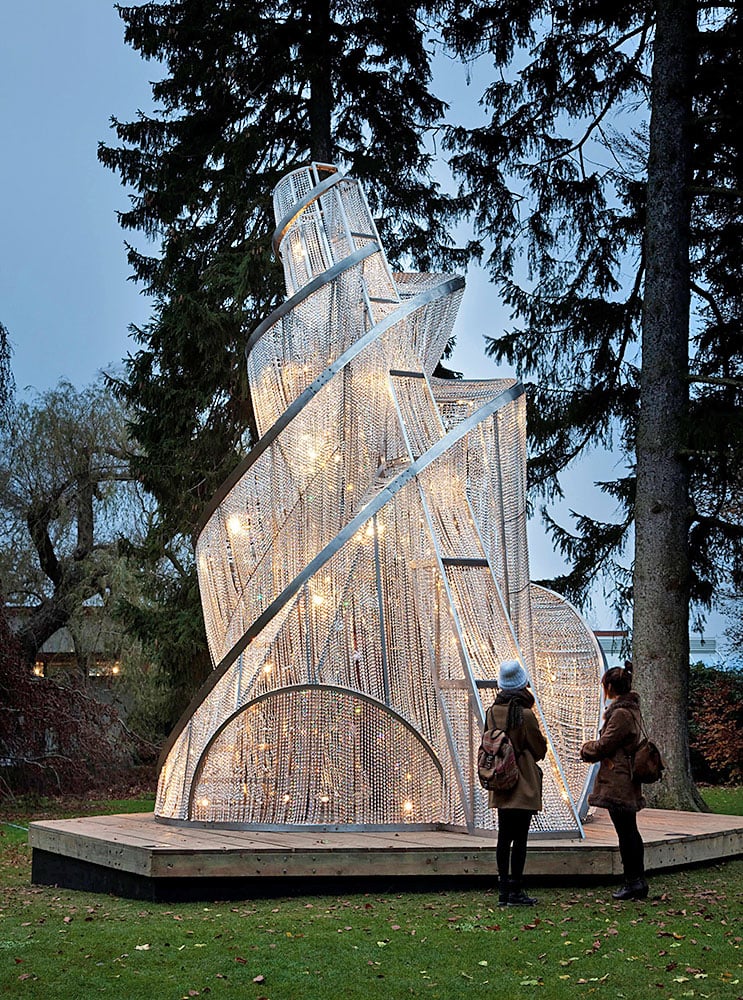
Ai Weiwei, Fountain of Light (2007). Steel and glass crystals on a wooden base. Courtesy of Jens Faurschou.
Tell us about a favorite work from your collection.
However, it is difficult to name just one. Ai Weiwei occupies a special place in our collection. fountain of light is visually powerful and is based on the tower of Tatlin, an excellent commentary on the failure of Communism.
Shirin Neshatthe photographic work of Speechless is exceptional. He has a a frankness but a refined refined poetry that I appreciate very much. She is such an important feminist voice and a keen observer of power dynamics.
 Shirin Neshat, Speechless (1996). Pen and ink on gelatin silver print. Courtesy of Jen Faurschou.
Shirin Neshat, Speechless (1996). Pen and ink on gelatin silver print. Courtesy of Jen Faurschou.
Doug AitkenThe stunning cast frosted resin work 3 modern figures (remember to breathe) from 2018 is another stunning piece, which we showed at Faurschou Beijing in 2019. I love Aitken’s ability to illuminate the impact of our media-saturated culture on our lives and relationships.
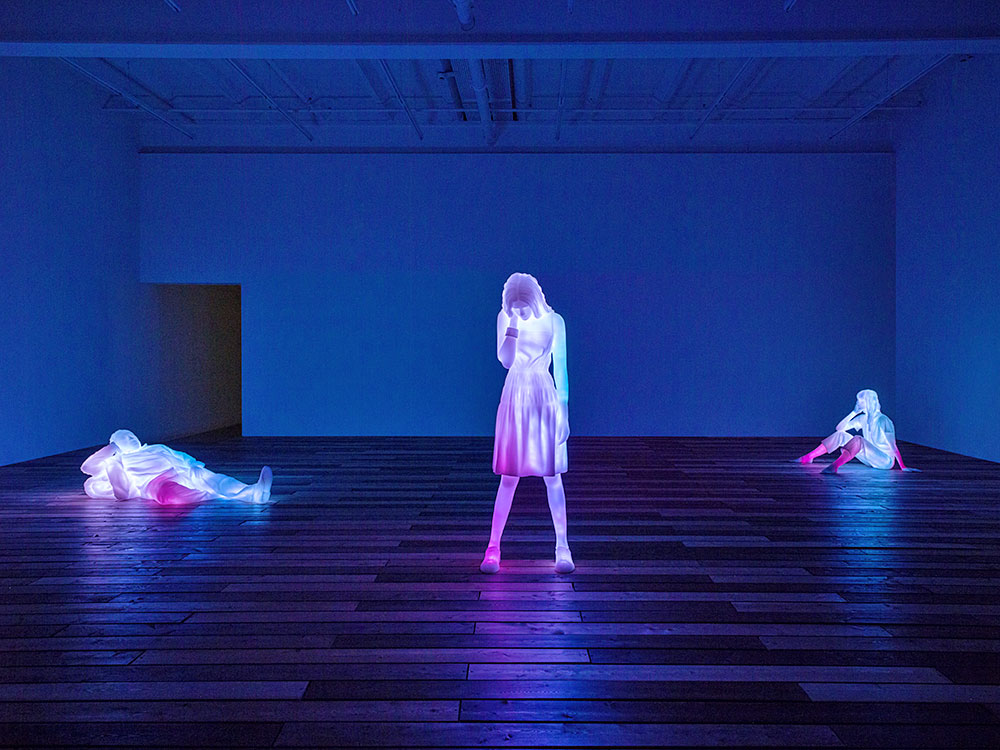 Doug Aitken, 3 modern figures (remember to breathe) (2018). Cast frosted resin, programmed LED lights and composition, audio speakers and components. Courtesy of Jens Faurschou.
Doug Aitken, 3 modern figures (remember to breathe) (2018). Cast frosted resin, programmed LED lights and composition, audio speakers and components. Courtesy of Jens Faurschou.
What works or artists do you hope to add to your collection this year?
The recent Lego Monet piece by Ai Weiwei to see at the Design Museum in London.
Additionally, we have collected works by Danish artist Jens Haaning from the early 90s. His latest work, Take the money and runis a 21St-masterpiece of the century. I wish we could own this one day. I would love to exhibit it with Rauschenberg’s Erase de Kooning.
What is the most expensive work of art you own?
I can say that the most precious work for me is a small portrait of my daughter made by Liu Xiaodong during a trip with the artist to Greenland in 2017.
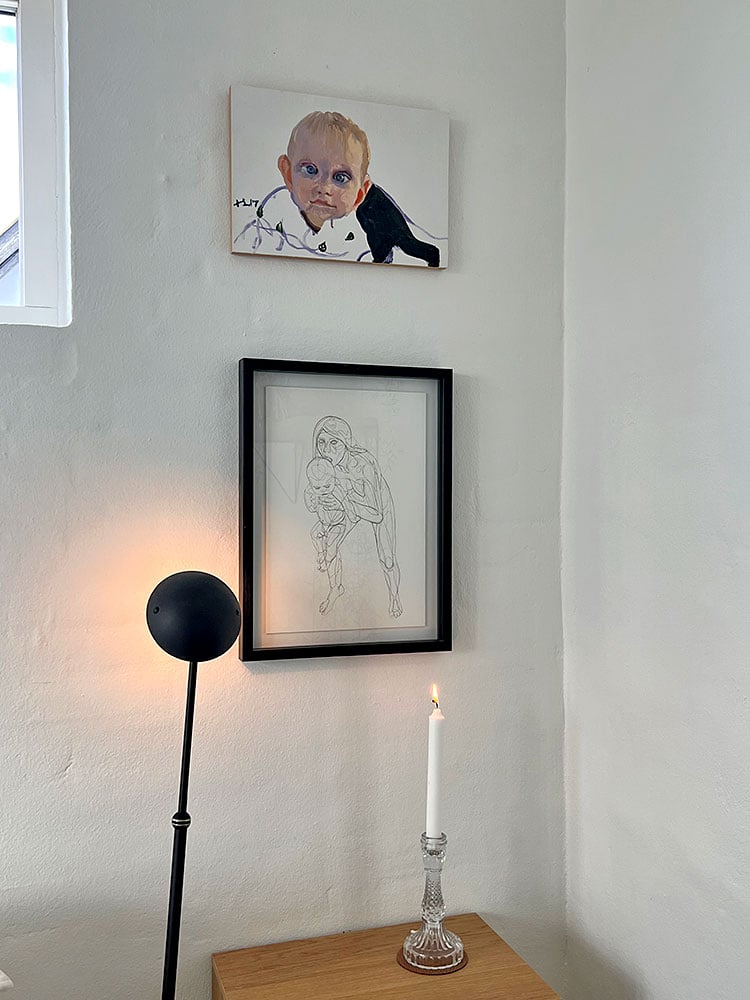
Liu Xiaodong’s portrait of Jens Faurschou’s daughter above a drawing by Ukrainian artist Julia Beliaeva. Courtesy of Jens Faurschou.
Where do you most often buy art?
I find myself buying art over the phone more and more often. When it comes to being physically Right now, Art Basel in Basel is my favorite art fair and the only place in the world where you can see the world’s best modern and contemporary art for sale in one place. We made good purchases there over the years. We also buy at auction. More recently, we got Marc TanseyIt is Bridge over the Cartesian Gap from the sale of Christie’s The Paul Allen collection.
Is there a work you regret buying?
Never.
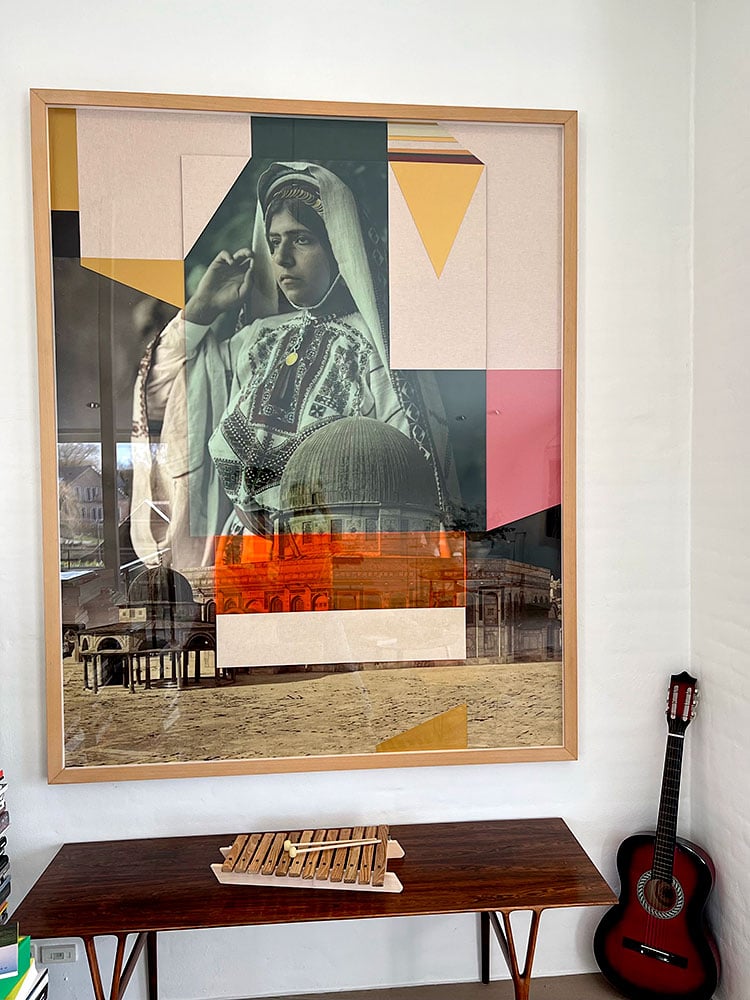 Hazem Harb, Power does not beat memory (2017). Courtesy of Jens Faurschou.
Hazem Harb, Power does not beat memory (2017). Courtesy of Jens Faurschou.
What work have you hung above your couch?
Not above the sofa, but in our living room we have a large scale collage by Hazem Harb titled Power does not beat memory (2017).
And in your bathroom?
A watercolor by Ernst Beyeler that I bought at a Fondation Beyeler charity auction. It is a privilege to have the opportunity to buy a work of art from a man I admire and with whom I have had many good collaborations.

Watercolor by Ernst Beyeler. Courtesy of Jens Faurschou.
What’s the least practical piece of art you own?
We have an affinity for large-scale installations, which is wonderful and impractical at the same time. Cai Guo QiangIt is Reflection – A Gift from Iwaki is one of them. It’s an excavated shell filled with broken porcelain from the small coastal village of Iwaki in Japan. You must ask the original Iwaki archaeological excavation team to help you install it, and you must perform a traditional Japanese exercise routine as a team every morning until the installation of the work is completed.
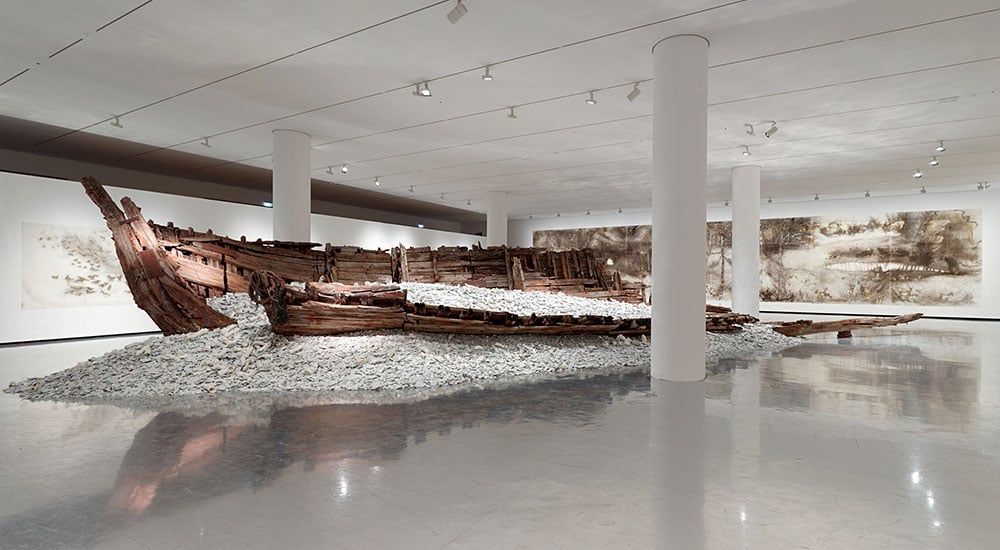
Cai Guo Qiang, Reflection – A Gift from Iwaki (2004). Boat in excavated wood and porcelain. Next video: installation at Faurschou Copenhagen, 2012. Both courtesy of Jens Faurschou.
What work would you have liked to buy when you had the opportunity?
That would be 152 wonderful drawings of Yayoi Kusama from the late 1950s to the early 1960s, as well as some sculptures and paintings. In 1995 we had the good fortune to purchase the works directly from the original owner. works on paper were blank, as if they had been made the day before. They have been kept all these years in a drawer. The asking price was $250,000 and the economic environment was tough. But I should have bought them then.
If you could steal one piece of art without getting caught, what would it be?
by Henri Matisse Portrait of Madame Matisse. The green Line of SMK, the National Gallery of Denmark. If you do not have vu, add it to your list of things to see in Copenhagen. This painting will never travel due to its fragile condition. I’m glad we can visit it whenever we want. Art like this that you want to see again and again.
Follow Artnet News on Facebook:
Want to stay one step ahead of the art world? Subscribe to our newsletter to receive breaking news, revealing interviews and incisive reviews that move the conversation forward.
